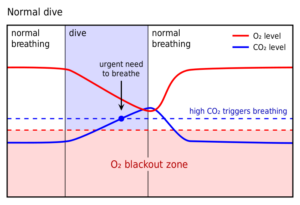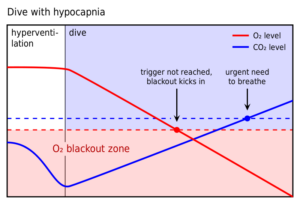First Aid SOS for Blackouts
How to identify a diver in a blackout condition and help saving his life.
Major Risks Under Water
Blackout Condition

Freediving blackout, breath-hold blackout is a class of hypoxic blackout, a loss of consciousness caused by cerebral hypoxia towards the end of a breath-hold (freedive or dynamic apnea) dive, when the swimmer does not necessarily experience an urgent need to breathe and has no other obvious medical condition that might have caused it.
Samba Condition

Freediving blackout can occur on any dive profile: at constant depth, on an ascent from depth, or at the surface following ascent from depth and may be described by a number of terms depending on the dive profile and depth at which consciousness is lost.
Dive Safely: First Aid SOS for Blackouts in Freediving and Spearfishing
Freediving and spearfishing are exhilarating water activities that allow enthusiasts to explore the depths of the ocean, often pushing the limits of breath-holding abilities. While these sports offer incredible underwater experiences, they also come with risks, one of which is the potential for blackouts. A blackout occurs when a diver loses consciousness due to a lack of oxygen, and it can happen unexpectedly. In this blog post, we'll discuss the importance of first aid for blackouts in freediving and spearfishing, providing essential tips to keep you and your diving buddies safe
Understanding Blackouts:
Blackouts in freediving and spearfishing are typically the result of hypoxia, a condition caused by a lack of oxygen. As divers descend and hold their breath, oxygen is consumed, and carbon dioxide levels rise. If a diver pushes their limits or fails to properly manage their breath-holding, the brain may not receive enough oxygen, leading to a blackout.
First Aid for Blackouts:
Recognition: The first step in providing effective first aid is recognizing the signs of a blackout. Look for a diver who suddenly goes limp, loses buoyancy, or exhibits an uncoordinated descent.
Initiate a Rescue: If you witness a fellow diver experiencing a blackout, initiate a rescue immediately. Signal for assistance from other divers and bring the unconscious diver to the surface.
Remove from Water: Once at the surface, remove the unconscious diver from the water as quickly and safely as possible. Support their head and keep the airway clear.
Assess Responsiveness: Check for responsiveness by tapping the diver and calling their name. If there is no response, proceed to the next step.
Check Breathing: Confirm if the diver is breathing. If not, begin rescue breathing immediately. Administer rescue breaths at a rate of one breath every 5-6 seconds, ensuring the chest rises with each breath.
Call for Emergency Medical Assistance: While providing first aid, call for emergency medical assistance or instruct someone else to do so. Time is crucial in these situations, and professional medical help is essential.
Monitor Vital Signs: Keep a close eye on the diver’s vital signs, such as pulse and breathing, until professional help arrives. Be prepared to continue rescue breathing if necessary.
Preventing Blackouts:
Proper Training: Ensure that all divers, especially beginners, undergo proper freediving and spearfishing training. Understanding the risks and techniques for managing breath-holding is essential.
Buddy System: Always dive with a buddy. Having a dive partner can mean the difference between a successful rescue and a tragic outcome.
Know Your Limits: Understand and respect your personal breath-holding limits. Never push yourself beyond what is comfortable or safe.
Stay Hydrated: Dehydration can increase the risk of blackouts. Drink plenty of water before and after diving to stay properly hydrated.




